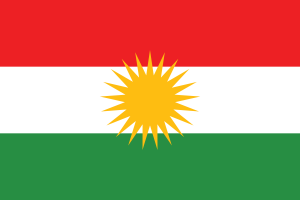Language/Northern-kurdish/Grammar/Coordinating-Conjunctions
| ◀️ Tourist Attractions — Previous Lesson | Next Lesson — Subordinating Conjunctions ▶️ |
As a teacher of Northern Kurdish for over 20 years, I find coordinating conjunctions to be an essential part of language learning. In this lesson, you will learn how to use coordinating conjunctions in Northern Kurdish. Coordinating conjunctions are used to connect two independent clauses, which are complete thoughts that can stand alone as sentences.
Once you've mastered this lesson, take a look at these related pages: Possessive Pronouns & Dative Case.
What are Coordinating Conjunctions?
Coordinating conjunctions are words that connect two sentences or elements of equal importance. They join sentences, phrases, or words of the same grammatical rank. The most common coordinating conjunctions in Northern Kurdish are 'u' meaning 'and,' 'yan' meaning 'or,' and 'am' meaning 'but.'
Here is an example of coordinating conjunctions in a sentence:
"Min berdewamî li derveyî malikane û taybetmendî ye, lê belê, min dixwazî ji aliyê hinek mafên hin kesan û ciwanên ereb ve bê derbas kirin."
Translated to English: "My perseverance extends beyond royalty and privilege, but I want to extend some rights to some people and Arab youth."
In this sentence, 'lê belê' means 'but' and it is used to join the two independent clauses.
Common Coordinating Conjunctions
Here are the common coordinating conjunctions in Northern Kurdish:
- 'am' meaning 'but'
- 'belê' meaning 'so,' 'thus,' or 'therefore'
- 'û' meaning 'and'
- 'yan' meaning 'or'
- 'dîsa' meaning 'again'
- 'na' meaning 'neither'
Coordinating Conjunctions in Sentences
Coordinating conjunctions can be found in sentences where there are two or more independent clauses. Independent clauses are clauses that can stand alone as a sentence. When a sentence contains two independent clauses and a coordinating conjunction, it is called a compound sentence.
Here are some examples of sentences with coordinating conjunctions:
| Northern Kurdish | Pronunciation | English |
|---|---|---|
| Merivên ku rêya wan nîne, di demekî de veşarî xwe didin | Merivên ku rêya wan nîne, di demekî de veşarî xwe didin | People who do not have a way, quickly lose themselves |
| Ji bo ku em hemî hev re dijîn, divê em dilê xwe vegotin | Ji bo ku em hemî hev re dijîn, divê em dilê xwe vegotin | In order to live together, we must understand each other |
| Min bibêje piştîkovê pirtûk xwend, dîsa pirtûk xwend | Min bibêje piştîkovê pirtûk xwend, dîsa pirtûk xwend | After finishing the book, I read it again |
| Ew yê çûye wê bîne, yan mîr bibe | Ew yê çûye wê bîne, yan mîr bibe | Either bring him back or become a prince |
Exercise
Identify coordinating conjunctions in the following sentences:
1. Ew Şervan û Medîna wê di heman saetê de bixwinin u bi hev re dadanîn. 2. Min xwedîr ji bîranîna xwe bû lê çû bo mela min, belkî ezê wê bînim. 3. Tu miqatê hubeşî yê Balkanikê bû lê min nizanîbû. 4. Ez dibêjim li hember wan, tu dibêjî nanîn dibe serê xwe.
Conclusion
In conclusion, coordinating conjunctions are essential for creating compound sentences in Northern Kurdish. Understanding how to use them effectively will improve your overall language skills. Practice makes perfect, so try to use coordinating conjunctions in your daily conversations.
Now that you've completed this lesson, don't stop learning! Check out these related topics: Place Adverbs & Pronouns.
Other Lessons
- Personal Pronouns
- Interrogative Pronouns
- Negative Statements
- Past Tense
- Manner Adverbs
- Future Tense
- Roots of Northern Kurdish
- 0 to A1 Course
- Time Adverbs
- Place Adverbs
Template:Northern-kurdish-Page-Bottom
| ◀️ Tourist Attractions — Previous Lesson | Next Lesson — Subordinating Conjunctions ▶️ |

